Présentation
RÉSUMÉ
La compatibilité électromagnétique (CEM) est devenue un paramètre important à prendre en compte lors d'un projet industriel faisant intervenir de l'électronique de signal ou de puissance. Dans cet article, sont détaillés les principaux phénomènes de perturbations électromagnétiques naturelles et artificielles, comme la foudre, les décharges électrostatiques ou les activités industrielles. Sont également décrits les procédés d'analyse de la CEM : il s'agit ici d'analyses conduites sur chaque système constituant l'installation au moyen de la détermination de plusieurs paramètres, parmi eux le niveau de perturbations émises, le niveau d'immunité et les affaiblissements.
Lire cet article issu d'une ressource documentaire complète, actualisée et validée par des comités scientifiques.
Lire l’articleAuteur(s)
-
François COSTA : Professeur des universités à l'IUFM de Créteil, Université Paris 12 - Chercheur au laboratoire SATIE de l'ENS de Cachan
INTRODUCTION
Ce dossier constitue une introduction à la problématique de la compatibilité électromagnétique CEM. Après la présentation des notions d'environnement et de compatibilité électromagnétiques, les principaux phénomènes de perturbations électromagnétiques naturelles et artificielles sont décrits en donnant quelques exemples et en envisageant le couplage des perturbations émises (conduites et rayonnées) à leurs « victimes ». La CEM a été jusqu'à très récemment abordée sous un angle expérimental, voire empirique, et il devient nécessaire de prédire par calcul les effets CEM dans un équipement ou un système. Quelques exemples significatifs et quelques éléments de réflexion sur les méthodes et outils de simulation permettent de conclure.
Ce dossier est le premier d'une série dédiée à l'étude des différentes facettes de ce domaine très vaste qui concerne tous les appareils et systèmes électriques et électroniques à faible ou forte puissance, sur une plage de fréquences allant de quelques hertz à quelques dizaines de gigahertz (GHz). Ainsi, sont proposés différents dossiers qui s'inscrivent dans les thèmes généraux suivants :
-
mesures et normes en CEM ;
-
transmission des perturbations conduites et rayonnées ;
-
effets électromagnétiques de la foudre ;
-
CEM dans le domaine des courants forts ;
-
CEM des cartes électroniques ;
-
méthodes et outils pour la simulation conduite et rayonnée en CEM du sous-système au système complexe ;
-
moyens de réduction des perturbations électromagnétiques : filtrage, blindage.
VERSIONS
- Version archivée 1 de févr. 2000 par Guy-Gérard CHAMPIOT
DOI (Digital Object Identifier)
Cet article fait partie de l’offre
Conversion de l'énergie électrique
(263 articles en ce moment)
Cette offre vous donne accès à :
Une base complète d’articles
Actualisée et enrichie d’articles validés par nos comités scientifiques
Des services
Un ensemble d'outils exclusifs en complément des ressources
Des modules pratiques
Opérationnels et didactiques, pour garantir l'acquisition des compétences transverses
Doc & Quiz
Des articles interactifs avec des quiz, pour une lecture constructive
Présentation
1. Nécessité et objet de la CEM
1.1 Perturbations et interférences électromagnétiques
L'environnement électromagnétique est devenu l'un des paramètres à prendre en compte dans tout projet industriel faisant intervenir de l'électronique de signal ou de puissance, au même titre que la gestion de la thermique ou la gestion des contraintes mécaniques.
Cette prise en compte doit avoir lieu lors de la conception et en tenant compte de l'insertion finale du produit. Les facteurs pris en considération, rayonnement, conduction et vulnérabilité, doivent être appréhendés de façon très précise : à cet effet, l'apport des outils logiciels de CAO en compatibilité électromagnétique (CEM) est devenu quasi-incontournable. Les appareils électriques et/ou électroniques ne travaillent généralement pas de manière isolée. De l'énergie électromagnétique, portée par des courants ou des champs électromagnétiques, peut franchir non intentionnellement leurs frontières soit pour y pénétrer, soit pour s'en échapper, par différents accès. La figure 1 schématise cette situation.
L'énergie électromagnétique captée non intentionnellement par un système électrique et/ou électronique peut entraîner une perturbation de son fonctionnement. Cette perturbation, ou interférence électromagnétique IEM, peut aller du simple désagrément, comme le crépitement dans un récepteur radio, à la perte de fonctionnalité momentanée ou permanente d'un système.
On entend par :
-
accès par l'enveloppe « la frontière physique de l'appareil à travers laquelle les champs électromagnétiques peuvent rayonner ou à laquelle ils peuvent se heurter » ;
-
accès par les câbles « le point auquel un conducteur ou un câble est connecté à l'appareil, par exemple, accès par les bornes de signaux, par les bornes de commande et par les bornes d'alimentation. » (norme EN 50082-2).
Les agressions électromagnétiques peuvent avoir lieu aussi bien sur un dispositif élémentaire que sur un système contenant des composants électriques et/ou électroniques.
On entend par système, une association de plusieurs appareils conçus pour accomplir une...
Cet article fait partie de l’offre
Conversion de l'énergie électrique
(263 articles en ce moment)
Cette offre vous donne accès à :
Une base complète d’articles
Actualisée et enrichie d’articles validés par nos comités scientifiques
Des services
Un ensemble d'outils exclusifs en complément des ressources
Des modules pratiques
Opérationnels et didactiques, pour garantir l'acquisition des compétences transverses
Doc & Quiz
Des articles interactifs avec des quiz, pour une lecture constructive
Nécessité et objet de la CEM
BIBLIOGRAPHIE
-
(1) - DEGAUQUE (P.), HAMELIN (J.) - Compatibilité électromagnétique – Bruits et perturbations radioélectriques. - Collection technique et ingénierie, Dunod, ISBN 2-10-004209-2, 654 p. (2000).
-
(2) - CHAROY (A.) - Compatibilité électromagnétique. - Dunod Tech., Éditions de la radio, ISBN 2-10-001438-2, 679 p. (1992).
-
(3) - MARDIGUIAN (M.) - Manuel pratique de CEM. - Hermès Science Publications, 430 p. (2003).
-
(4) - CHAMPIOT (G.G.), BLANCHET (P.), BOURQUIN (P.), CAZAUDEBAT (H.), DEPARIS (P.A.), GUILLERY (P.), LEOST (J.Y.), MENDES (A.), OTT (R.), PANNIER (A.), REY (C.), WENDLING (J.), DELOUX (P.), DRUGEON (J.L.) - Les perturbations électriques et électromagnétiques – Conception et amélioration des installations industrielles et tertiaires. - Collection Electra – Dopee 85/EDF Centre français de l'électricité, ISBN 2-86995-018-76 – Prix Sadi-Carnot 1993, 16 références , 371 p. (1991).
-
(5) - PICHON (L.) - Compatibilité électromagnétique et nouvelles technologies. - Cours...
DANS NOS BASES DOCUMENTAIRES
ANNEXES
Certains sites offrent la possibilité de télécharger des versions d'évaluation ou des versions gratuites de logiciels.
http://www.cedrat.com/fr/solutions-logicielles/flux.html
Ansolft commercialise Ansys, Inplorer et HFSS http://www.ansoft.com
Cedrat commercialise Flux 3 D et Potunus http://www.cedrat.com
http://www.cedrat.com/fr/solutions-logicielles/inca3d.html
http://femm.foster-miller.net/wiki/HomePage
https://www.electronics-lab.com/
HAUT DE PAGE
Schneider Electric...
Cet article fait partie de l’offre
Conversion de l'énergie électrique
(263 articles en ce moment)
Cette offre vous donne accès à :
Une base complète d’articles
Actualisée et enrichie d’articles validés par nos comités scientifiques
Des services
Un ensemble d'outils exclusifs en complément des ressources
Des modules pratiques
Opérationnels et didactiques, pour garantir l'acquisition des compétences transverses
Doc & Quiz
Des articles interactifs avec des quiz, pour une lecture constructive










